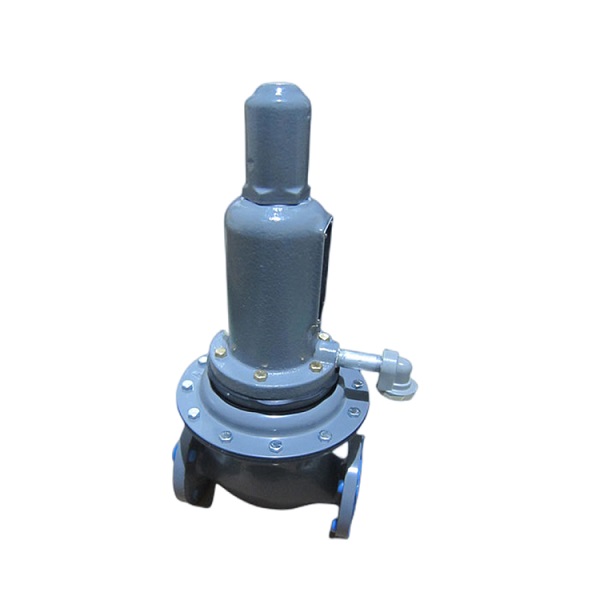
Principle of Operation
In the Differential Pressure Valve KC50P-97, downstream pressure is registered under the diaphragm via the external control line and is used as the operating medium. Increased demand lowers the downstream pressure and allows the spring to move the diaphragm and stem assembly down, opening the valve disk and supplying more gas to the downstream system. Decreased demand increases the downstream pressure and moves the diaphragm and stem assembly up, closing the valve disk and decreasing the gas supply to the downstream system.
Function
1. Overpressure Protection
The differential pressure valve KC50P-97, as is the case with most regulators, has an outlet pressure rating that is lower than the inlet pressure rating. Some type of overpressure protection is needed if the actual inlet pressure exceeds the outlet pressure rating.
Maximum operating inlet pressure for the differential pressure valve KC50P-97 is given. All models must be protected against inlet pressure above their listed maximum.
Regulator operation below these emergency pressure limitations does not preclude the possibility of damage from external sources or from debris in the gas line. The differential pressure valve should be inspected for damage after any overpressure condition.
2. Downstream Control Line
An external downstream control line must be installed before putting the differential pressure valve KC50P-97 in operation. Without the control line, the differential pressure valve will remain wide open. The downstream control line should be a pipe of at least diameter; connect it to the downstream pipe line at least 5 to 10 pipe diameters from the differential pressure valve and in a straight section of pipe. The external downstream control line connection is 1/4-inch NPT.
- English
- French
- German
- Portuguese
- Spanish
- Russian
- Japanese
- Korean
- Arabic
- Irish
- Greek
- Turkish
- Italian
- Danish
- Romanian
- Indonesian
- Czech
- Afrikaans
- Swedish
- Polish
- Basque
- Catalan
- Esperanto
- Hindi
- Lao
- Albanian
- Amharic
- Armenian
- Azerbaijani
- Belarusian
- Bengali
- Bosnian
- Bulgarian
- Cebuano
- Chichewa
- Corsican
- Croatian
- Dutch
- Estonian
- Filipino
- Finnish
- Frisian
- Galician
- Georgian
- Gujarati
- Haitian
- Hausa
- Hawaiian
- Hebrew
- Hmong
- Hungarian
- Icelandic
- Igbo
- Javanese
- Kannada
- Kazakh
- Khmer
- Kurdish
- Kyrgyz
- Latin
- Latvian
- Lithuanian
- Luxembou..
- Macedonian
- Malagasy
- Malay
- Malayalam
- Maltese
- Maori
- Marathi
- Mongolian
- Burmese
- Nepali
- Norwegian
- Pashto
- Persian
- Punjabi
- Serbian
- Sesotho
- Sinhala
- Slovak
- Slovenian
- Somali
- Samoan
- Scots Gaelic
- Shona
- Sindhi
- Sundanese
- Swahili
- Tajik
- Tamil
- Telugu
- Thai
- Ukrainian
- Urdu
- Uzbek
- Vietnamese
- Welsh
- Xhosa
- Yiddish
- Yoruba
- Zulu
- Kinyarwanda
- Tatar
- Oriya
- Turkmen
- Uyghur








